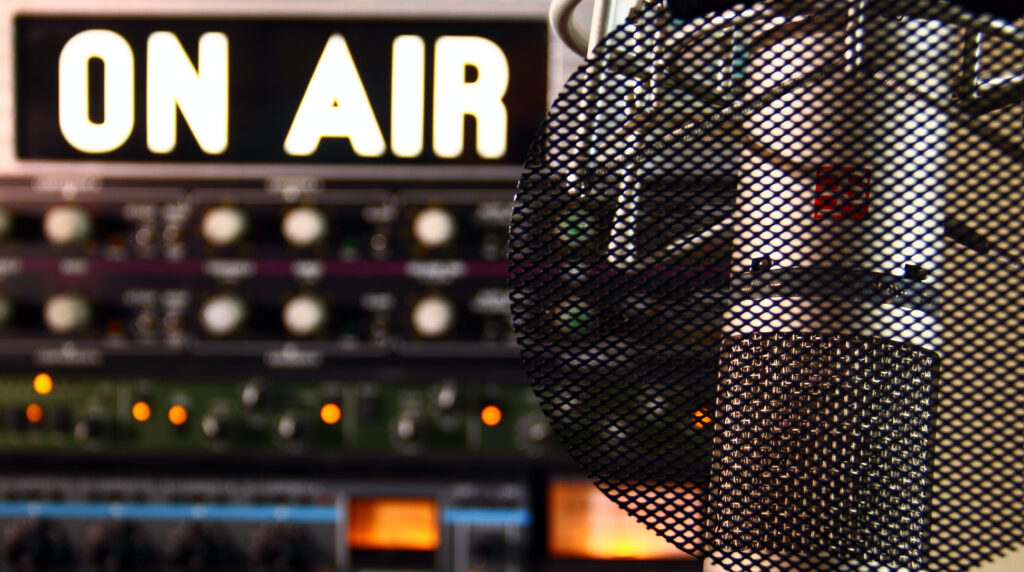A few days ago we attended an event in La Rioja, and we were given the chance to be interviewed by the IES La Laboral school radio. It is a highly dynamic project and it can be really fun for your students, helping them build strong skills on communication, technology and content.
However, sometimes it may seem difficult to start a school radio project, especially if this is the first time in your center. Thus, in this post you’ll find out what to consider to create a school radio, if you want it to succeed and encourage your students.

The advantages of creating your own school radio with your students
Creating a school radio with your students offers many advantages. Here you have some:
- Skills development: students’ involvement in the project will help them improve their communicative, tecnologic and content skills. Also, the project will build momentum for their public speaking skills and it will also reinforce their self esteem.
- Creativity boost: your students will need to explore several approaches to find out how to create the school radio, inspiring their own creative vision and originality.
- Data transfer and education improvement: your students will be required to carry out a throughout research to establish the message they want to communicate. This process will benefit their critical thinking skills and their ability to contrast information and verify it.
- Fun experience to improve motivation: the school radio project can be so entertaining for your students, also quite enriching. Students participation in this project may rise their motivation and sense of belonging, also this will affect positively to their academic performance.

Step 1: In-depth awareness of media and radio
Before getting to the funniest part of creating a radio, you’ll need to talk about media and communication in class, and go down to detail.
On the one hand, it is important to know the most influential mass media nowadays, the impact on society, how they operate and main characteristics. When it comes to talking about radio, keep a narrow focus: with an extensive knowledge of radio genres, the language and tone, the resources, etc.
On the other hand, another key aspect to guarantee the success of your school radio is to encourage your students to listen to the radio for a given period of time. They will get deeper on how to handle radio language, how a programme is structure, the usual dynamics and other useful issues to create their own school radio.

Step 2: Gather all the required elements
When you already know how to manage a radio programme and you’ve learnt the main aspects of radio language by heart, you need to gather all the necessary elements together. More details below:
- Tape recorder: you will need a tape recorder to record an exquisite radio programme. This tape recorder can be study-type but, if resources do not allow it, a mobile phone tape recorder is also really powerful and useful.
- Microphones: as this is a radio programme it ‘s mandatory that voices are recorded with a great quality. Thus, you will need microphones, there are some microphones that are really simple and can be connected to a mobile phone, perfect for this occasion.
- Software to edit the audio: you will need to edit or mix the audio, add sounds and music. There are several options available in the market, one of them is Audacity, a free and easy-to-use software.
- Accessories: you will also need earphones, microphone stands, or other elements that will contribute to a more efficient job.
Step 3: Create the script and record the programme
When you have all the necessary materials, let’s get down to work! Your students must create the script. The script has to be properly structured according to the type of programme, setting the different sections and establishing how long the programme will last.
Once the script is ready, your students can check and prepare it to proceed to record the programme. Take your time. You can even include some ads section to stay true to reality!
Once the programme is recorded, take your time to edit it, mixing voices, adding some music, removing background noise, etc.

Step 4: Share the radio programme with the whole center and explore its continuity
Last step is to share the final work with the rest of the center for everyone to see the result. You can also suggest this project to be recurrent, to continue working on it through the course.
As we’ve seen, a school radio offers many benefits to the students and keeps them updated on relevant topics around them.
What do you think about a school radio project?
Have you ever thought about creating a school radio? We would like to know more about your experiences and success stories. You can find us on Facebook, Twitter, Instagram and Youtube.
On air!





